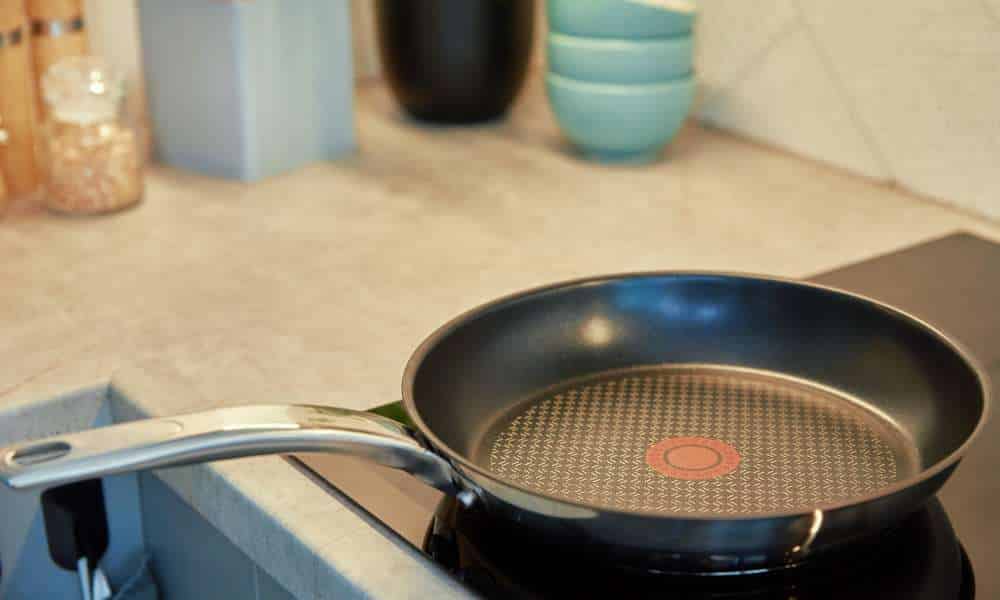Ceramic coating cookware has risen in popularity as a modern alternative to traditional non-stick options, like Teflon. This type of cookware features a base metal, typically aluminum or stainless steel, which is then coated with a layer of sol-gel that transforms into a non-stick ceramic surface upon curing. The appeal of ceramic-coated cookware lies in its non-toxic properties—it is free from PFOA and PTFE, chemicals commonly found in other non-stick coatings that raise health concerns. Beyond health, this cookware offers efficient heat distribution, a variety of vibrant colors, and easy cleaning. In this article, we will explore what ceramic coating is, delve into its benefits and drawbacks, and offer practical advice on how to make the most out of this cookware in your kitchen.
What is Ceramic Coating?
Ceramic coating refers to a type of non-stick finish applied to cookware, typically made from hardened clay. This coating is kiln-baked onto the surface of metal cooking utensils, such as aluminum or stainless steel, creating a glossy, smooth, and highly effective non-stick layer. Unlike traditional non-stick coatings, which often contain chemicals like PFOA and PTFE, ceramic coatings are celebrated for being free of these potentially harmful substances. The result is a safer, environmentally friendly alternative for cooking that does not compromise on ease of use or food release capabilities. Ceramic coatings are also heat-resistant and available in a variety of colors, adding both functional and aesthetic value to kitchenware.
Advantages of Ceramic Coated Cookware
Ceramic-coated cookware offers several compelling advantages that make it a preferred choice for health-conscious and style-savvy cooks alike. Firstly, the non-stick surface ensures that food is release easily, reducing the need for excessive oil or butter and making cleanup a breeze. This feature is not only convenient but also supports healthier cooking practices. Additionally, ceramic coatings are free from PFOA and PTFE, harmful chemicals often used in traditional non-stick cooking utensils, which contributes to its safety and health benefits. Another significant advantage is the excellent heat distribution and retention of this cookware, which helps in cooking food evenly and efficiently, saving energy and time. Lastly, the aesthetic appeal of this cookware is undeniable. Available in a range of vibrant colors, these pots and pans can brighten up any kitchen, marrying functionality with style.
Advantages of Ceramic Coated Cookware
Ceramic-coated cookware offers a suite of benefits that make it a popular choice among home cooks. The non-stick properties are perhaps the most celebrated feature, allowing for healthier cooking with less oil and making clean-up a hassle-free task. Importantly, this type of cooking utensil avoids the use of PFOA and PTFE, chemicals found in traditional non-stick surfaces that have raised health concerns over the years. Additionally, ceramic coatings excel in heat distribution and retention, ensuring meals cook evenly and efficiently. Beyond practicality, this cookware also stands out with its aesthetic appeal. Available in a multitude of vibrant colors, it adds a splash of style to the kitchen, allowing cooks to express their tastes while preparing meals.
IV. Disadvantages of Ceramic Coated Cookware
One of the main concerns is its durability. Compared to other types of non-stick coatings, ceramic can be more prone to chipping and wear over time, particularly if not handled with care. This susceptibility means that this cookware often requires more meticulous maintenance to maintain its non-stick surface and aesthetic appeal. Additionally, it is generally not suitable for high-heat cooking. Exposing ceramic-coated pans to very high temperatures can degrade the coating faster and may also cause food to burn, given the cookware’s efficient heat retention. As such, users must be mindful of cooking temperatures and the types of utensils used to ensure the longevity of their cooking utensils.
V. Usage Tips
To maximize the performance and extend the lifespan of ceramic-coated cooking utensils, adopting proper usage and care techniques is crucial. When cooking, it’s best to avoid high heat settings; medium or low temperatures are ideal for preventing damage to the ceramic surface. For cleaning, steer clear of abrasive sponges and harsh detergents. Instead, use a soft sponge or cloth with warm, soapy water to gently clean the cookware after each use, ensuring it’s thoroughly dried before storage. As for utensils, opt for wooden, silicone, or plastic tools instead of metal, which can scratch and chip the ceramic coating. Following these best practices will help maintain the non-stick properties and visual appeal of this cookware, ensuring it remains a valuable part of your kitchen arsenal for years to come.
Conclusion
Ceramic-coated cookware offers an appealing blend of functionality and style, making it a popular choice for those looking to combine healthy, non-stick cooking with aesthetic appeal. While it does have some limitations, such as sensitivity to high heat and potential durability issues, proper care and usage can greatly extend its lifespan and performance. By adhering to recommended temperature guidelines, using gentle cleaning methods, and choosing the right utensils, you can maximize the benefits of this cookware. Ultimately, whether ceramic-coated cooking utensil is the right choice for you will depend on your cooking style and priorities, but for many, its advantages make it a worthy addition to the kitchen.

